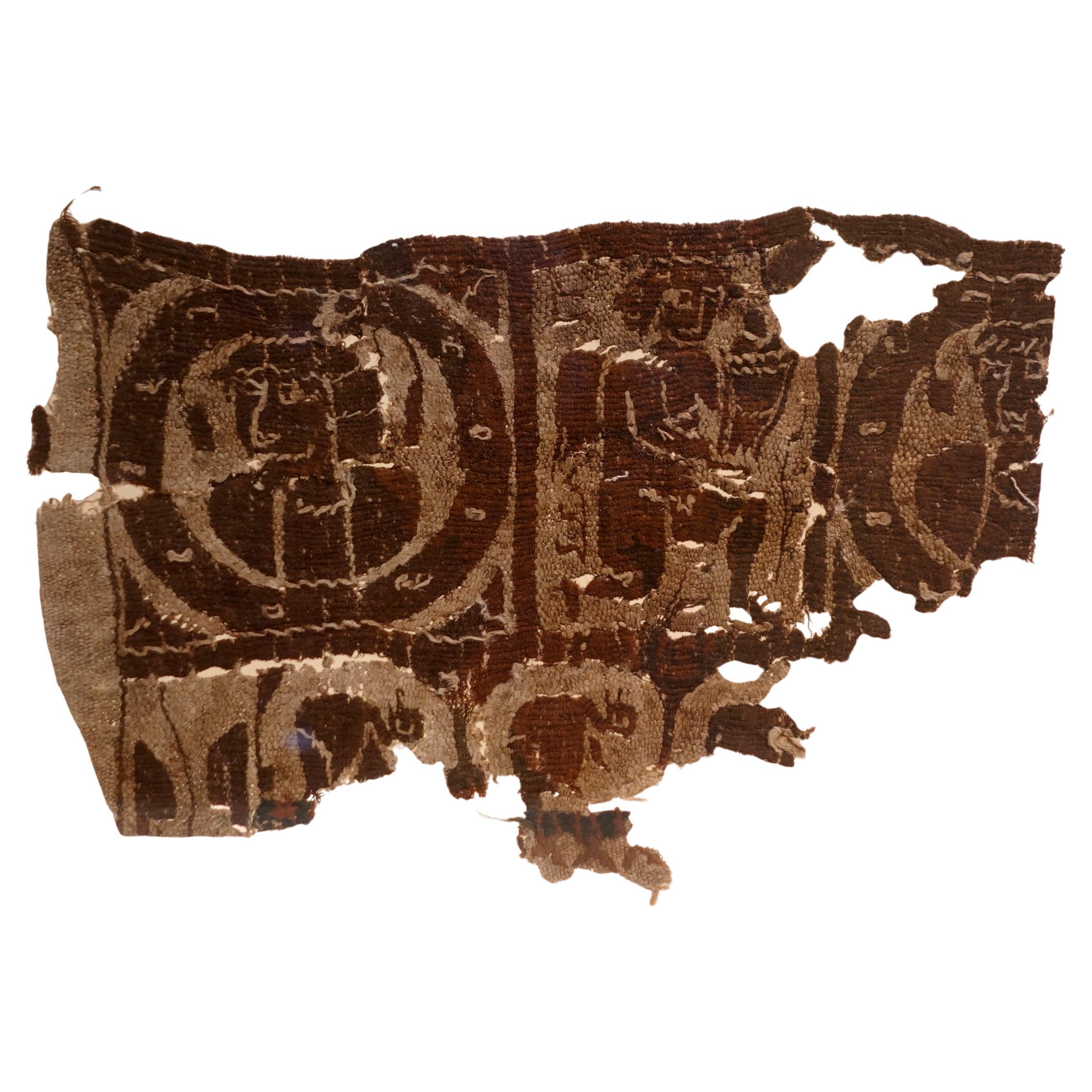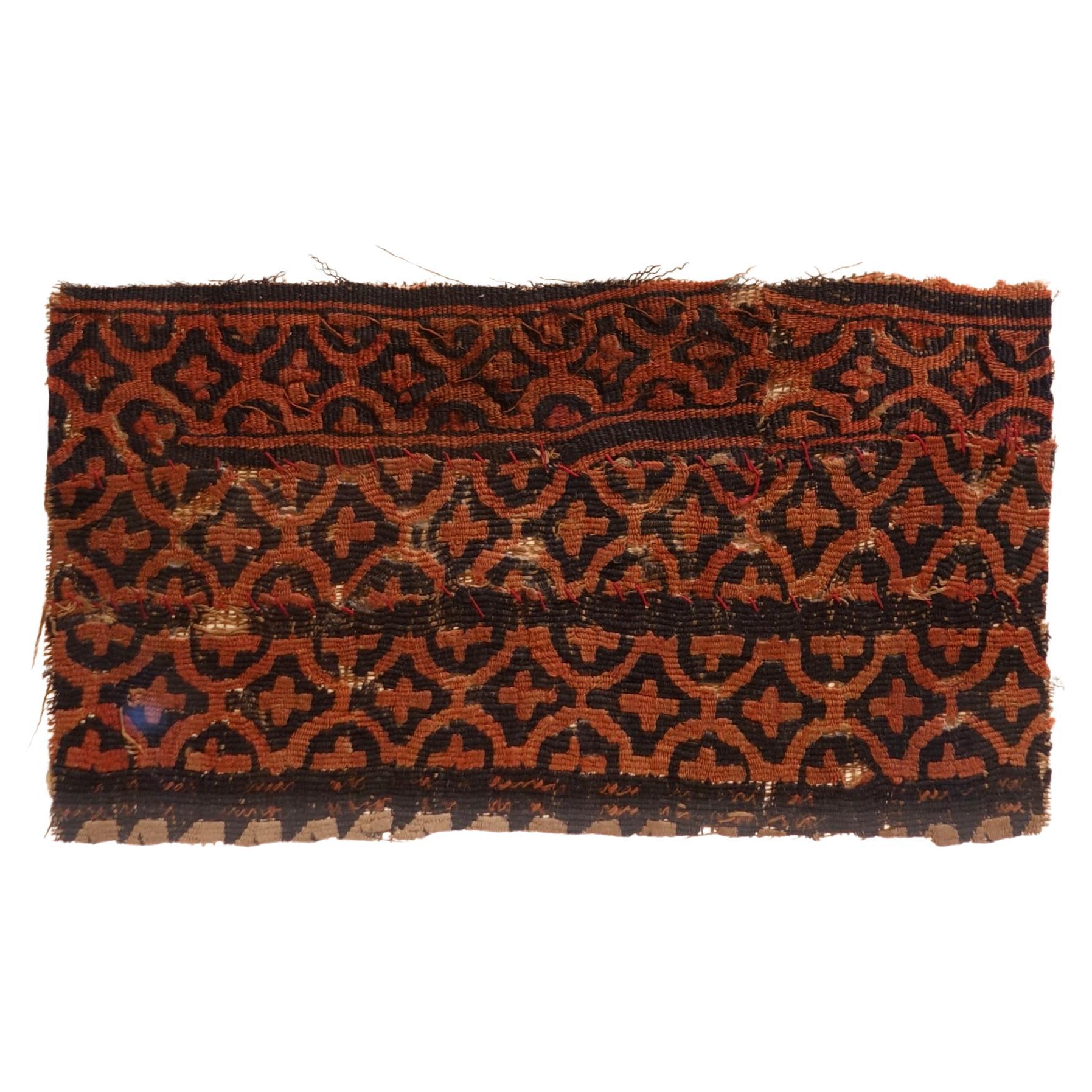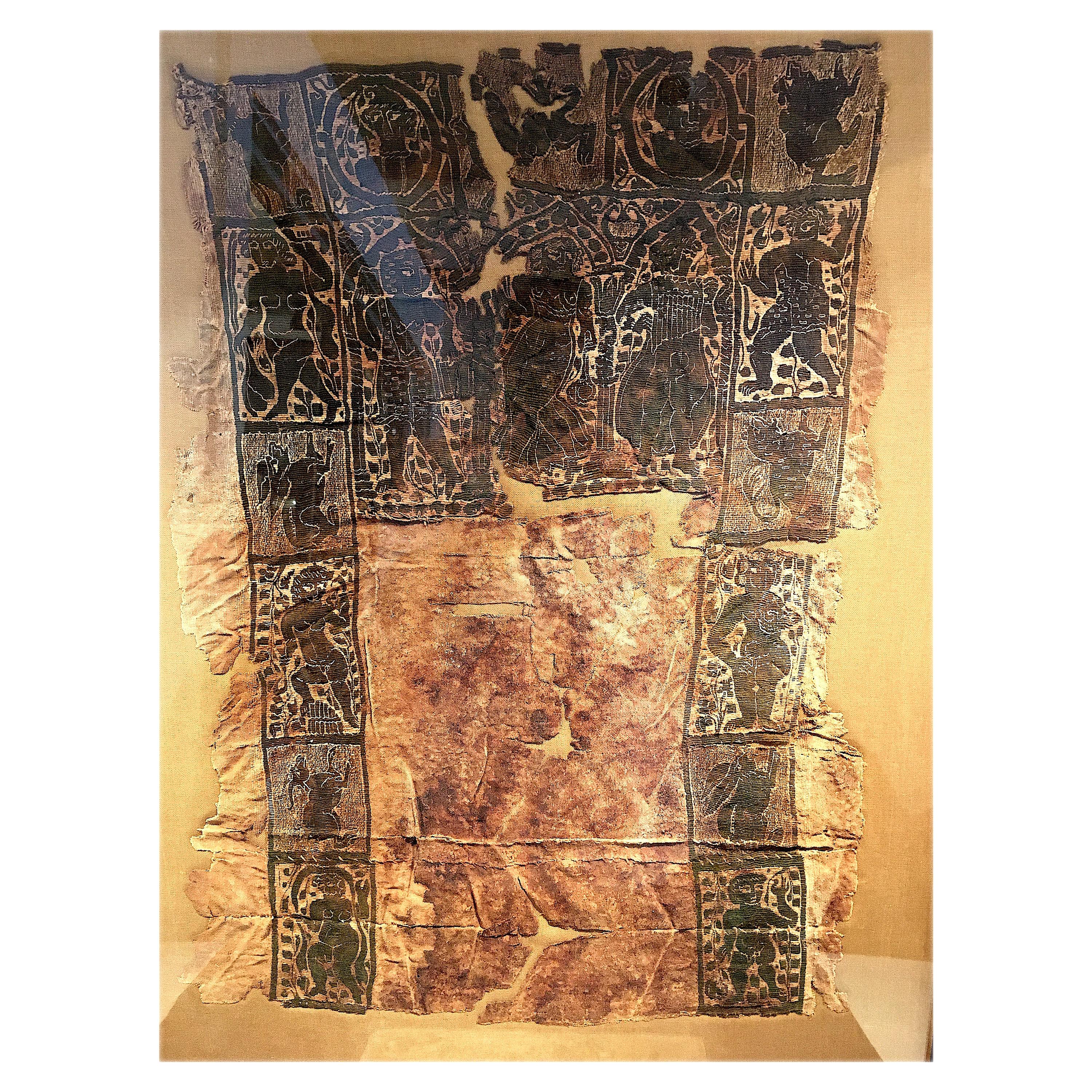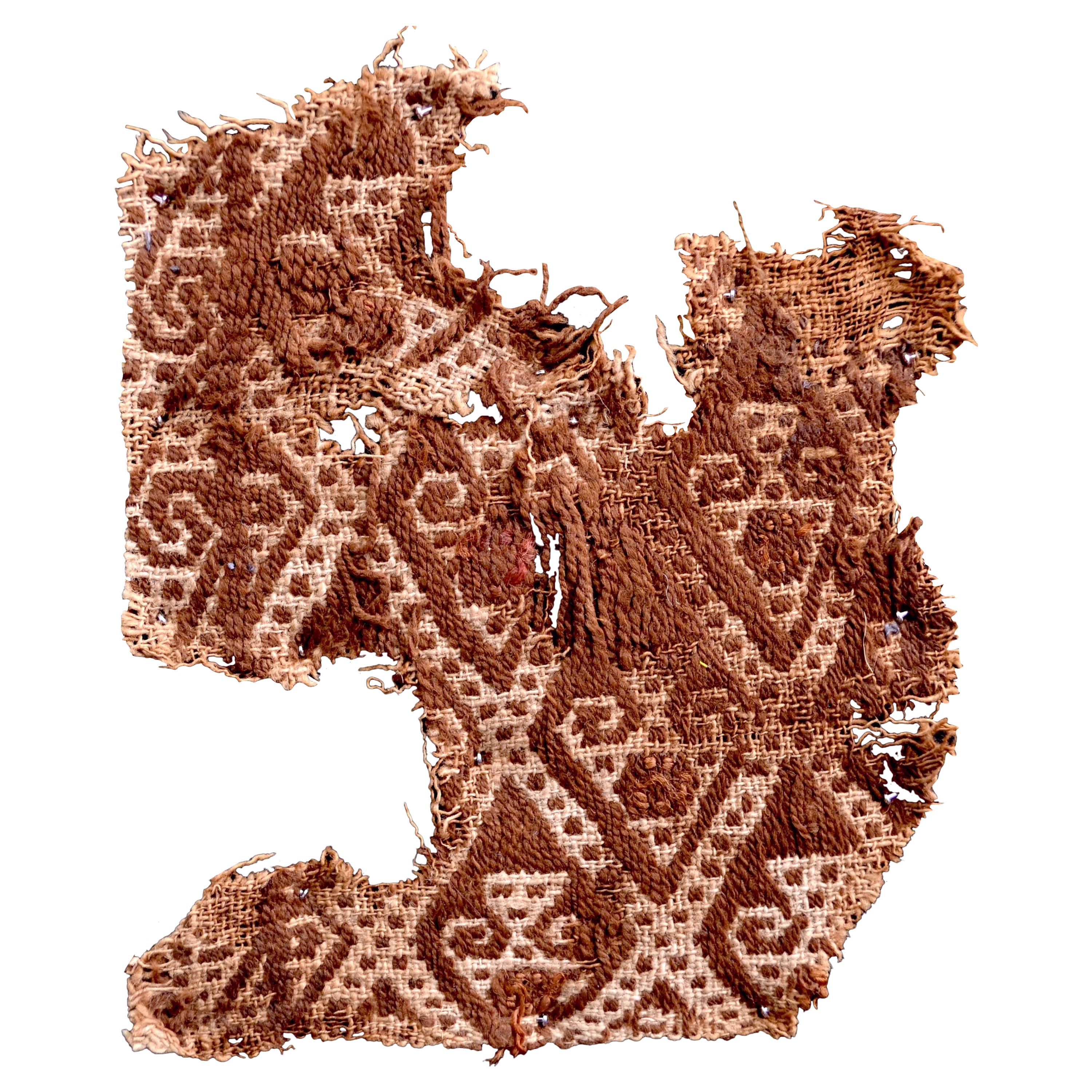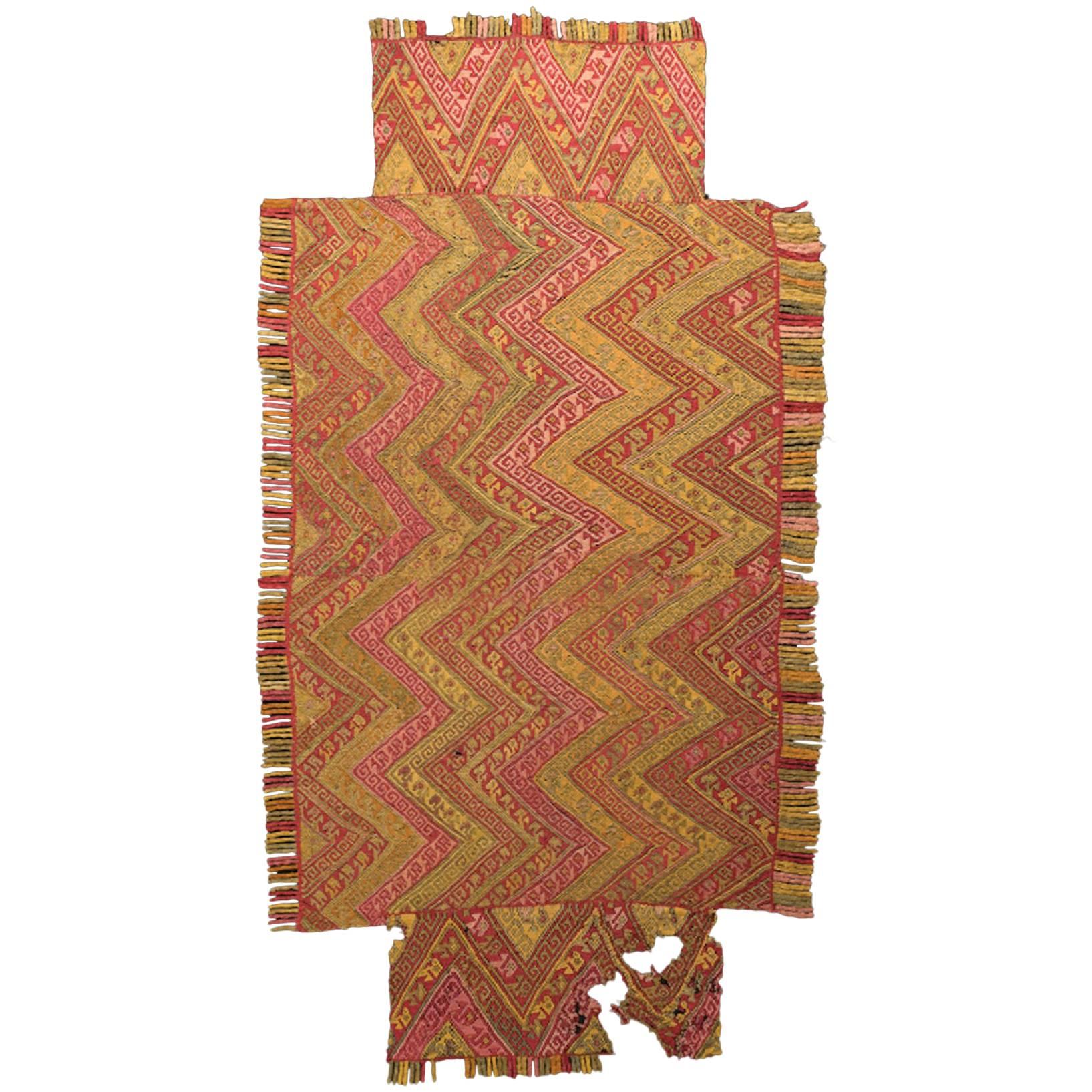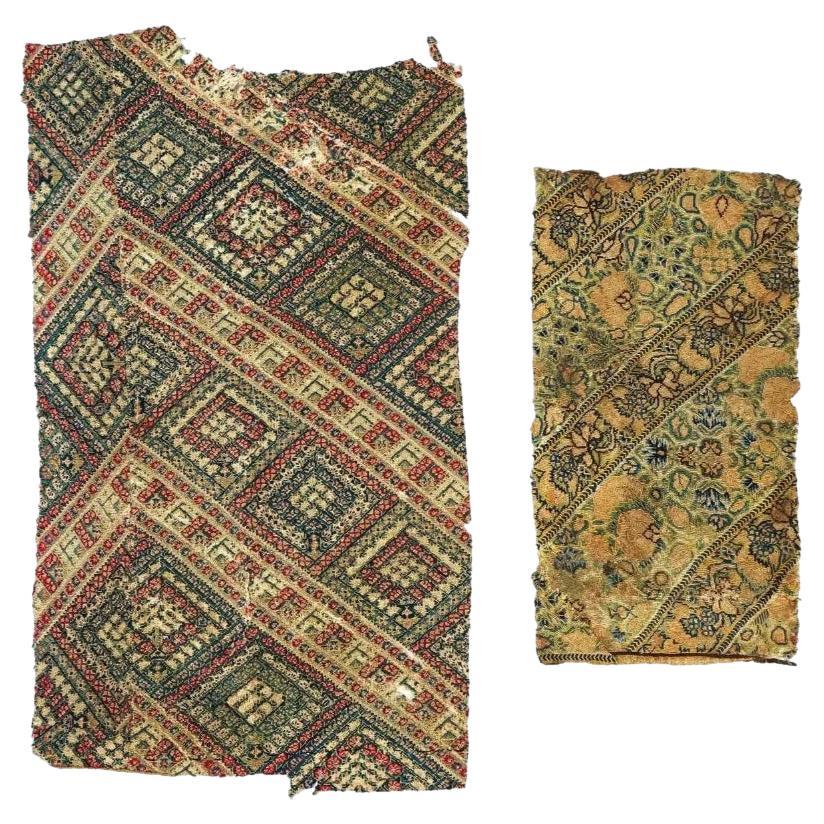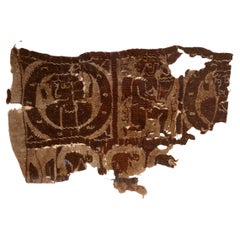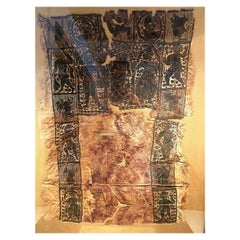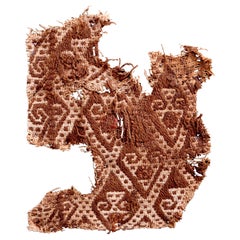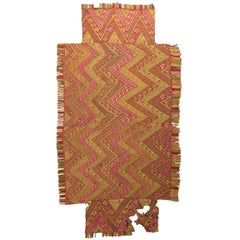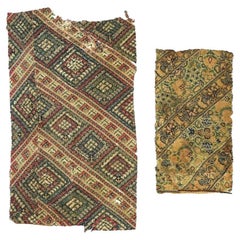Items Similar to Kapati textile - Epoque Byzantine; 4th–5th Century C.E
Want more images or videos?
Request additional images or videos from the seller
1 of 5
Kapati textile - Epoque Byzantine; 4th–5th Century C.E
$2,021.93
£1,505.87
€1,700
CA$2,835.86
A$3,110.66
CHF 1,604.05
MX$37,153.79
NOK 20,344.27
SEK 19,085.23
DKK 12,958.15
About the Item
Kapati Textile
Byzantine Period; 4th–5th Century C.E.
Materials: Plant and Animal Fibers, Wool
9,5 x 9,5 cm
This woolen fabric is woven in the traditional Coptic Kapati style, characteristic of Egypt during the Christian era. The name "Kapati" refers to the Copts of Egypt and describes a weaving technique that does not use embroidery or printing. It is said that Al-Muqawqis, the governor of Egypt, offered the Prophet garments made from Kapati fabric.
At the 1900 Exposition Universelle in Paris, the French archaeologist Albert Gayet showcased the results of his excavations from the winter of 1898-1899. Around one hundred Coptic textiles and fragments were displayed at the Palais du Costume. Their aesthetic generated considerable enthusiasm, particularly among artists like Auguste Rodin and Henri Matisse. This led to a "Coptomania," which, among other things, influenced fashion designers.
The square fragment features black decoration on a beige background; the two squares at the center are separated by scalloped edges, from which hang various ornaments or geometric motifs. At the center of the fragment is an image of a dancing figure surrounded by geometric decorations. This piece dates back to a time when ancient pagan themes were prevalent, roughly from the mid-3rd century to about the mid-4th century C.E.
Many authors, including Herodotus and Plutarch, noted that the Egyptians held a certain aversion to wool garments, considering them impure due to the climate's heat. However, during the Greco-Roman period and later in the Byzantine era, the use of high-quality wool became widespread, particularly because Coptic weavers adorned shirts and cloaks with wool embellishments.
A very similar fabric is preserved at the Bibliotheca Alexandrina (number "BAAM" 0917; Inv. (Coptic Museum) 1890).
- Dimensions:Height: 3.75 in (9.5 cm)Width: 3.75 in (9.5 cm)Depth: 0.04 in (1 mm)
- Style:Egyptian (Of the Period)
- Materials and Techniques:
- Place of Origin:
- Period:
- Date of Manufacture:4th - 5th century
- Condition:Wear consistent with age and use.
- Seller Location:Bruxelles, BE
- Reference Number:1stDibs: LU6666241775952
About the Seller
5.0
Vetted Professional Seller
Every seller passes strict standards for authenticity and reliability
1stDibs seller since 2022
15 sales on 1stDibs
Typical response time: <1 hour
- ShippingRetrieving quote...Shipping from: Bruxelles, Belgium
- Return Policy
Authenticity Guarantee
In the unlikely event there’s an issue with an item’s authenticity, contact us within 1 year for a full refund. DetailsMoney-Back Guarantee
If your item is not as described, is damaged in transit, or does not arrive, contact us within 7 days for a full refund. Details24-Hour Cancellation
You have a 24-hour grace period in which to reconsider your purchase, with no questions asked.Vetted Professional Sellers
Our world-class sellers must adhere to strict standards for service and quality, maintaining the integrity of our listings.Price-Match Guarantee
If you find that a seller listed the same item for a lower price elsewhere, we’ll match it.Trusted Global Delivery
Our best-in-class carrier network provides specialized shipping options worldwide, including custom delivery.More From This Seller
View AllCoptic textile Byzantine Period; 4th–5th Century C.E.
Located in Bruxelles, BE
Coptic textile
Byzantine Period; 4th–5th Century C.E.
Materials: linen, Wool
23 x 16 cm
This fragment features black decorations on a beige background, depicting human figures with...
Category
Antique 15th Century and Earlier Egyptian Egyptian Antiquities
Materials
Wool, Linen
Wool Tapestry from Egypt
- 5th–7th Century C.E.
Located in Bruxelles, BE
Wool Tapestry from Egypt
Late Antique Period; 5th–7th Century C.E.
This band fragment features geometric decorations in red and black.
Textiles like this are believed to have been...
Category
Antique 15th Century and Earlier Egyptian Egyptian Tapestries
Materials
Wool
Boiled Leather Trunk, Spanish, 17th Century
Located in Bruxelles, BE
Leather trunk
Spanish, 17th century
Boiled Leather, wood and iron
Measures: 22 x 53 x 32 cm.
Provenance :
- collection Metz-Noblat, Château de Clevant, France
Rectangular trunk of the form and size of a small suitcase with wrought iron hinges and lock-plate.
Wood, covered with leather, cut and embossed with every surface of the thick cow hide covered in interlace, zoomorphic features.
The construction method is boiled leather, often referred to by its French translation cuir-bouilli: a process used to change flexible, vegetable-tanned leather into rigid, moulded objects. For shaping of the vegetable-tanned leather, heat and moisture were used, as indicated by the term boiled leather. No written medieval sources describing the production of decorated cuir bouilli objects survive, so knowledge of the process relies on the important studies of the Scottish leather historian John William Waterer. A large range of methods, materials and techniques could be used in various combinations. The vegetable-tanned leather, made supple with moisture and heat, was stuffed, shaped and nailed to the rigid wooden coffer support. The stuffing material was probably modeled beeswax or stearin wax. To shape the leather, to create its topography, « Cushions » were made by lacing a thread through an awl hole and attaching the flexible leather and stuffing to the rigid wooden support on the bottom. Then the decoration was done: lines were incised through the upper layer of the leather (epidermis) with different thicknesses of knives or needles. Contours were created with deep v-shaped cuts, decoration with thin incision and final details with a needle point. For the incision and pouncing stage, the leather was probably kept heated and moistened for suppleness.
Once dry, the leather would be hard and rigid.
the saturated leather is worked over a form, possibly even damp sand, with the pattern shaped using bone or wooden tools. Compare to metal, leather was lighter and it offered protection from cuts and punctures. Cuir bouilli objects were produced by specialist leather workers and needed skillful craftsmanship.
The surface is filled with roundels shaped foliages enclosing animals, lions and peacocks. The foliate arabesques creating a vegetal connection tweet the animals create the impression of a lush verdant space . The vegetal pattern here employed in combination with geometrical pattern came from the pre-islamic artistic traditions of the Byzantine and Sasanian empires. An aspect of Islamic geometry Is the basic symmetrical repetition and mirroring of the shapes that create a sense of harmony.
The decoration of this truck is inspired by the islamic « arabesque » a form of vegetal ornament composed of spirals, intertwining plants and abstract curvilinear motifs. An arabesque character is given to the birds of the decorations through extreme stylisation. This arabesque maintained the classical tradition of median symmetry, freedom in Detail and heterogeneity of ornament.
The presence of the peacocks is a paradisiacal allusion: in popular Islamic literature they were among the original inhabitants of the garden of Paradise expelled with Adam and Eve. Peacock as a decorative motif may have originated in the West, despite their eastern provenance. There was an ancient belief that the flesh and feathers of peacock do not decay. This led to the peacock becoming a christian symbol for Christ’s resurrection.
Renowned for their decorative wall hangings, seventeenth-century Spanish leatherworkers also produced utilitarian objects, such as this trunk. A similar trunk is on display at the Metropolitan museum of art ( 09.158.1).
Related literature :
Davies L. 2006. Cuir bouilli. Conservation of leather and related materials, 94-102, Oxford: elsevier Butterworth-Heinemann
Grabar, Oleg. The Mediation of Ornament. Princeton: Princeton University Press, 1992
Gabriela Germana Roquez, "El mueble en el Peru en el siglo XVIII...
Category
Antique 17th Century Decorative Boxes
Materials
Iron
Bolognese School of the 16th Century - Mummy of Saint Catherine of Bologna
Located in Bruxelles, BE
Bolognese School of the 16th Century
Mummy of Saint Catherine of Bologna
Oil on Panel
20,5 x 7 x 0,8 cm
This rare painting depicts Saint Catherine of Bologna as a mummy, housed in a ...
Category
Antique 16th Century Italian Renaissance Paintings
Materials
Wood, Giltwood
$3,330 Sale Price
20% Off
Free Shipping
Wood and leather game box - Italy, 19th century
Located in Bruxelles, BE
Wood and leather game box for chess, Nine men’s morris and Backgammon
Italy, 19th century
33 x 33,3 x 11,2 cm
Nine men’s morris also known as mill game (merelles, from the Latin wor...
Category
Antique 19th Century Italian Arts and Crafts Games
Materials
Leather, Wood
Canaanite Anthropoid Coffin Lid - 12th-10th century BC
Located in Bruxelles, BE
Rare Canaanite Anthropoid Coffin Lid
Terra Cotta
12th – 10th Century BC
Provenance:
Public Auction Paris (2022)
Private Collection F. Antonovich (Paris – 1980s)
Art Loss Register...
Category
Antique 15th Century and Earlier Israeli Archaistic Wall-mounted Sculptures
Materials
Terracotta
You May Also Like
Ancient Coptic Textile with Classical Figures
Located in Spring Valley, NY
Finely woven of wool and linen, this large, ancient, museum level Coptic textile depicts figures derived from classical antiquity, some playing musical ...
Category
Antique 15th Century and Earlier Egyptian Classical Roman Antiquities
Materials
Wool, Linen
Abstract Paracas Precolumbian Textile, Peru, 1100-1400 AD, Ex Ferdinand Anton
Located in San Pedro Garza Garcia, Nuevo Leon
Earth tones pre-Columbian textile fragment with abstract embroidered figures. This piece is framed in a black shadowbox.
It is a wonder to behold antiquities such as a pre-Columbian textiles, an authentic piece of art that has been preserved for centuries and that survives generation after generation. Textiles are infinitely more delicate than wood, metal, or rock artifacts -- so the existence of these pieces after hundreds and thousands of years is exceptional. These textiles maintain their vibrant colors, natural threads, and their unique, historical designs.
Provenance: This textile comes from the collection Ulrich Hoffmann, Stuttgart and former collection of the archaeologist Ferdinand Anton...
Category
Antique 15th Century and Earlier Peruvian Pre-Columbian Antiquities
Materials
Textile
Pre-Columbian Chimu Textile, Meander Design and Fringe, Peru circa 900 to 1300AD
Located in San Pedro Garza Garcia, Nuevo Leon
A woven textile shirt of rectangular form having small rectangular panels on the front and back, all with fringed borders, and open head slit in center. Decorated with zigzag rows of...
Category
Antique 15th Century and Earlier Peruvian Pre-Columbian Antiquities
Materials
Textile
18Th C Antique Persian Iranian Hand Woven Textiles
Located in Long Island City, NY
A lot of two antique Persian Iranian hand woven embroidered textiles, circa 18th century. The first textile is adorned with hand woven a raised geometrical ornament. The second featu...
Category
Antique 18th Century Persian Textiles
Materials
Textile
$390 Sale Price / set
35% Off
18Th Century Moroccan Berber Woven Textile W Silk
Located in Long Island City, NY
A lot of antique Moroccan Berber hand woven textiles with silk. The textile is adorned with traditional foliage, geometrical and abstract patterns. One ware is adorned with fringes. ...
Category
Antique 18th Century Unknown Textiles
Materials
Textile
$785 Sale Price
35% Off
Amazing Early 16th Century Peruvian Textile 1'2" x 1'4"
Located in New York, NY
Amazing Early 16th Century Peruvian Textile, Circa date: Late 16th Century
Category
Antique 16th Century Peruvian Other Quilts and Blankets
Materials
Wool
More Ways To Browse
Byzantine Antique
Antique Pagan
Early Byzantine
Byzantine Furniture
Egypt Textile
Antique Faux Bamboo Writing Table Or Desk
Wotier Almost Pink Ceramic Side Table Or Stool
Antique Wall Apothicary Or Medicine Cabinets
Southeast Asian Bronze Rain Drum Table Or Frog Drum
Czech Or French Beaded Peacock Lamp
Turned Ash Bedside Or Table Lamp
Foldable Side Table Or Serving Tray
Flip Top Games Or Card Table
Cream Marble Or Travertine Coffee Tables
Tiled Teak Or Danish Coffee Tables
Iron Or Metal Garden Bench 4 Ft
Ceramic Italian Cheetah Or Leopard
Japanese Ceramics Edo Period Or Earlier
